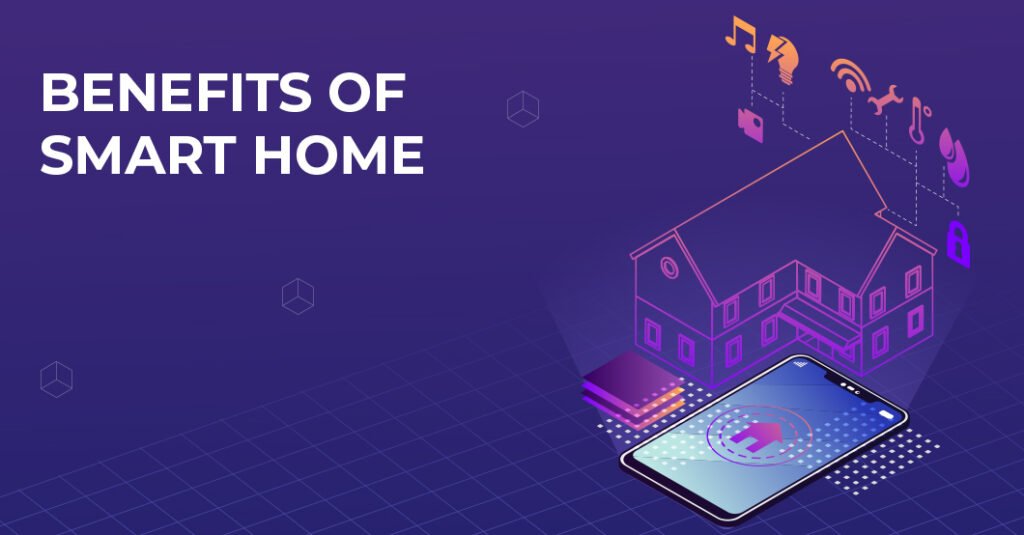Smart home technology, also known as home automation or domotics, has revolutionized the way we live. Gone are the days when you had to manually control every aspect of your home. With the advent of smart home devices, transforming your humble abode into a futuristic living space has never been easier. In this blog post, we delve into the world of smart homes, exploring the benefits, constraints, and frequently asked questions surrounding this innovative technology.
Contents
What is a Smart Home?

A smart home is a residence equipped with various connected devices and appliances that can be controlled remotely and automated to simplify and enhance everyday life. These devices, such as smart light bulbs, thermostats, security systems, and voice assistants, communicate with each other through a home network, allowing homeowners to regulate and monitor them effortlessly using their smartphones or voice commands.
The Benefits of Smart Homes

Transforming your dwelling into a smart home opens up a world of possibilities, providing an array of benefits that can make your life easier, more convenient, and even more secure.
1. Convenience: With automated tasks and remote control at your fingertips, managing your home becomes effortless. You can turn off the lights in any room or adjust the thermostat without leaving the comfort of your couch.
2. Energy Efficiency: Smart home technology allows you to optimize energy consumption by monitoring and controlling your devices. You can schedule lights to turn off when not in use or adjust the temperature automatically, leading to significant energy savings and reduced utility bills.
3. Enhanced Security: Smart homes offer advanced security features to protect your loved ones and belongings. From smart locks that provide keyless entry and security cameras with real-time alerts to motion-activated lighting, you can keep a close eye on your home and deter potential intruders.
4. Remote Monitoring: Whether you’re at work or on vacation, you can monitor your home from anywhere. Check on surveillance cameras, receive alerts about unusual activity, or even remotely unlock your door to let in a trusted visitor.
Constraints of Smart Homes
While smart homes offer numerous benefits, it’s important to be aware of the constraints that come with this technology.
1. Cost: Transforming your home into a smart home requires an initial investment. From purchasing the smart devices themselves to ensuring compatibility with your existing infrastructure, the cost can add up. However, the long-term energy savings and convenience often outweigh the initial expenditure.
2. Privacy Concerns: With increased connectivity and data sharing, privacy becomes a significant concern. It’s essential to research and choose reputable brands that prioritize data security and offer features such as secure remote access and strong encryption.
3. Compatibility: As the market for smart home devices continues to grow, compatibility between different brands and ecosystems can be a challenge. Ensure that the devices you choose are compatible with each other and can be controlled through a centralized hub or app.
Where to Start the Smart Home Journey

The world of smart homes is both exciting and vast, but it can be a bit overwhelming if you’re just beginning to explore it. From controlling your lights with a simple voice command to securing your home remotely, the possibilities are endless. So, where do you start on your journey to a smarter home? This ultimate guide will point you in the right direction.
1. Define Your Goals
Before diving into the world of smart home technology, it’s essential to define your goals. What do you want to achieve with your smart home? Consider the following aspects:
Convenience
- Do you want to simplify daily tasks and routines?
- Are you looking for ways to control your home remotely?
Energy Efficiency
- Is saving on utility bills and reducing your environmental impact a priority?
- Do you want to optimize your home’s energy usage?
Security
- Are you concerned about the safety of your home and loved ones?
- Do you want real-time monitoring and security alerts?
Entertainment
- Are you looking to transform your living space into an entertainment hub?
- Do you want to access your favorite shows and music effortlessly?
Accessibility
- Do you or your family members have specific accessibility needs?
- Are you interested in devices that can assist with mobility challenges or aging in place?
Understanding your goals will help you focus on the areas of smart home technology that matter most to you.
2. Start Small
It’s tempting to jump headfirst into the world of smart homes and automate everything at once. However, a more practical approach is to start small. Begin with a few key areas or devices that align with your goals. For example:
- Install smart bulbs to control your lighting and set the mood in your living space.
- Invest in a smart thermostat to optimize your home’s temperature and save on energy costs.
- Add a smart security camera to monitor your property remotely.
- Purchase a voice assistant device like Amazon Echo or Google Home for easy control and information access.
Starting small allows you to get a feel for smart home technology without overwhelming yourself.
3. Choose Your Ecosystem
Smart home devices often come with compatibility requirements, meaning they work best within specific ecosystems or platforms. The major ones include:
- Amazon Alexa: Works seamlessly with a wide range of smart devices and offers excellent voice control capabilities.
- Google Home/Google Assistant: A strong ecosystem for Android users with a focus on voice control.
- Apple HomeKit: Ideal for Apple enthusiasts, offering strong security and integration with iOS devices.
- SmartThings (Samsung): Great for users looking to integrate a variety of smart devices into one ecosystem.
Selecting a compatible ecosystem will ensure that your devices work together harmoniously.
4. Secure Your Network
With the convenience of smart homes come concerns about data privacy and cybersecurity. To protect your smart home network:
- Set Strong Passwords: Use complex, unique passwords for your devices and network.
- Enable Two-Factor Authentication: If available, enable two-factor authentication for added security.
- Regular Updates: Keep your devices and router firmware up to date to patch potential vulnerabilities.
- Network Segmentation: Consider segmenting your smart home devices from your primary network for added security.
5. Experiment and Expand
As you become more comfortable with your initial smart home setup, don’t hesitate to experiment and expand. Try out new devices, automations, and integrations to enhance your smart home experience. For instance:
- Add smart plugs to make existing appliances remotely controllable.
- Automate your window blinds to adjust according to the time of day.
- Explore smart door locks and smart garage door openers for added security.
- Connect your smart home to cloud services like IFTTT (If This Then That) for custom automations.
6. Stay Informed
The world of smart home technology is ever-evolving, with new devices and features continually being introduced. Stay informed by reading tech blogs, joining online communities, and attending smart home technology events. This will help you make informed decisions as you expand your smart home setup.
Remember, building a smart home is a journey, not a destination. Your goals and needs may evolve over time, and your smart home can grow and adapt with them. By defining your goals, starting small, choosing the right ecosystem, securing your network, experimenting, and staying informed, you’ll be well on your way to a smarter, more convenient, and efficient living space. Embrace the future, one smart device at a time, and watch as your life transforms right before your eyes.
Where to Buy Smart Home Devices
Now that you’re ready to embark on your journey to a smarter home, you’re probably wondering where to buy the best smart home devices. With the increasing popularity of these devices, there are numerous options available. In this shopping guide, we’ll explore the best places to purchase smart home devices and make informed decisions.
1. Online Retailers
Amazon
- Selection: Amazon offers an extensive range of smart home devices from various brands.
- Reviews: Customer reviews can help you make informed purchasing decisions.
- Amazon Echo: The Echo range of devices, powered by Alexa, can be found here.

Smart Living India
- Variety: Best Buy carries a wide selection of smart home products, from smart switches to security cameras.
- Product Reviews: SmartLivingIndia.com test their products and gives more details than any other ecommerce websites. It also offers comprehensive comparison options and other tools for you to pick the right products for your requirements.
- Information: Find more smart home news and articles to keep yourself updated with the latest information. Detailed tutorials will help you in every step of your smart home journey.
2. Manufacturer Websites
Many smart home device manufacturers sell their products directly through their websites. This option can be advantageous for several reasons:
- Access to the Latest Models: You can often find the newest releases and models on the manufacturer’s website.
- Warranty and Support: Direct purchases may offer better warranty and customer support options.
- Exclusive Bundles: Manufacturers may provide exclusive bundles and deals on their websites.
3. Smart Home Expos and Events
Attend smart home expos and events in your area or online. These gatherings often feature product demonstrations, exclusive deals, and opportunities to interact with experts who can guide you in making the right choices.
Remember to do your research before making a purchase, read reviews, and compare prices to ensure you get the best deals and products that match your specific needs and goals. With the right devices, your smart home will be on its way to transforming your daily life into a more convenient and efficient experience. Happy shopping and smart home building!
Frequently Asked Questions about Smart Homes
Do I need to be tech-savvy to set up a smart home?
Setting up a smart home does not require extensive technical knowledge. Most smart devices come with user-friendly interfaces and step-by-step instructions for installation and integration.
Can I control my smart home when I’m away?
Yes, one of the key advantages of a smart home is the ability to control and monitor it remotely. As long as you have an internet connection, you can manage your smart devices from anywhere in the world.
Are smart homes secure?
Smart home security is a priority for manufacturers. Choose devices from reputable brands, update firmware regularly, and secure your home network with a strong password to ensure the highest level of security.
Can I integrate existing devices into a smart home system?
Yes, many smart home hubs and ecosystems support the integration of existing devices. Check the compatibility of your devices before making a purchase and consider investing in a hub that supports multiple protocols.
In conclusion, smart homes offer unparalleled convenience, energy efficiency, enhanced security, and remote monitoring capabilities. While the initial cost and privacy concerns may be factors to consider, the benefits these technologies bring to our daily lives are undeniable. With a little research and careful selection of devices, you can transform your home into a truly intelligent space that simplifies and enriches your lifestyle.


